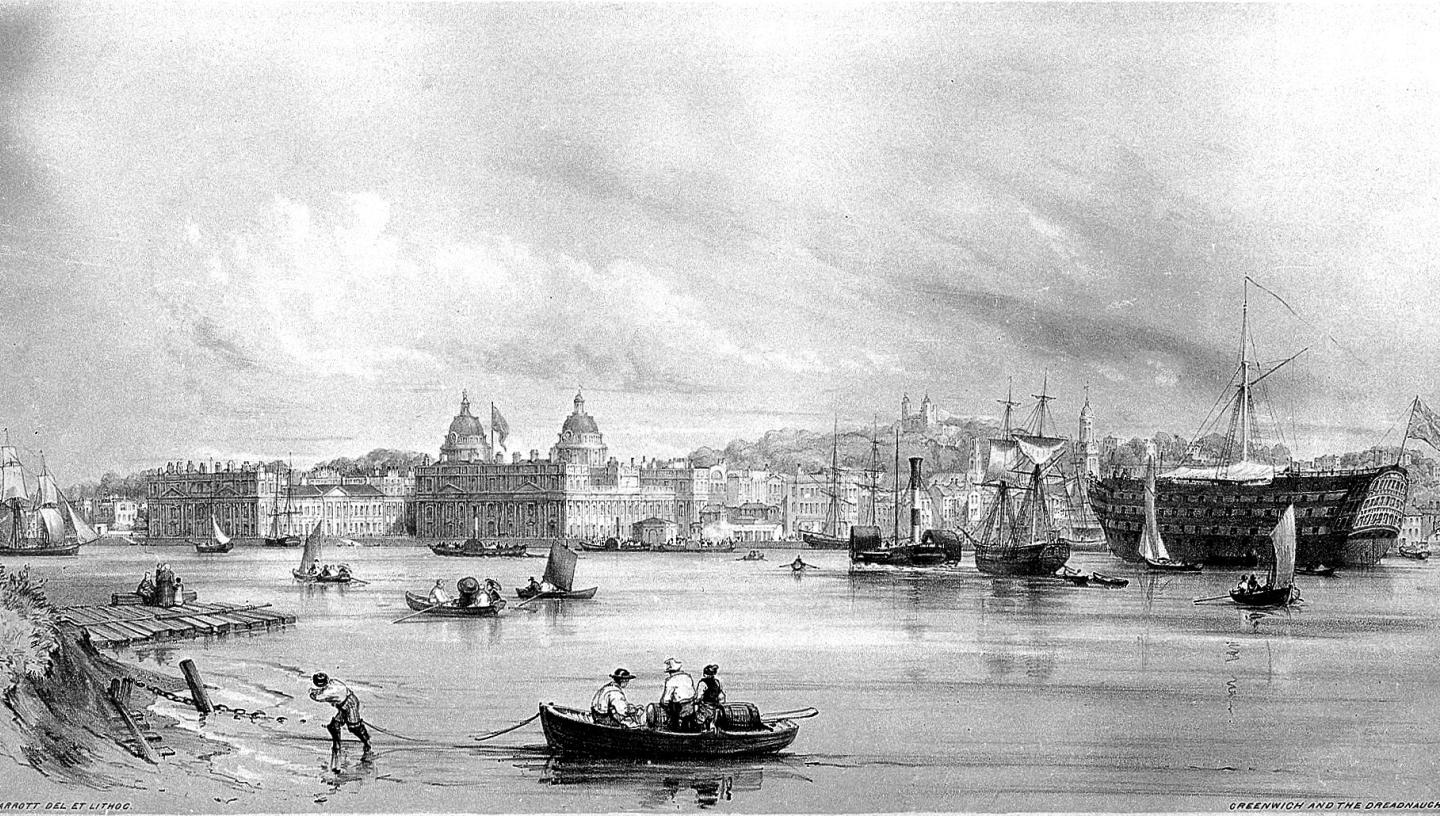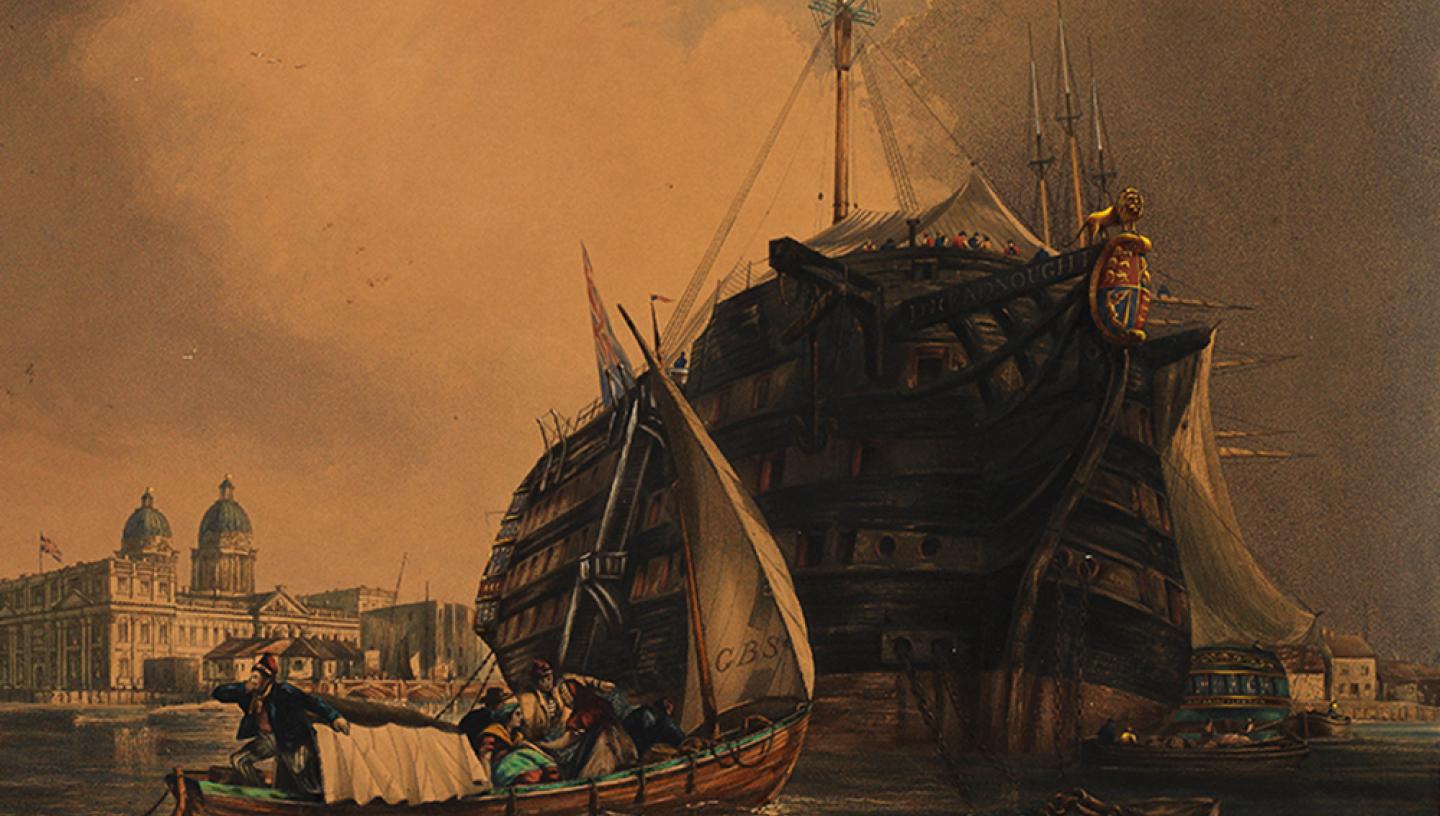
11 Nov 2022
From grim workhouses to 'the salutary influence' of the Bath Mineral Water Hospital, learn about 19th century health and hospitals through the medical records of the Dreadnought Seamen's Hospital.
by Martin Salmon, Archivist and Curator of Manuscripts
The Dreadnought Seamen’s Hospital at Greenwich was the main clinical site of the Seamen’s Hospital Society (now Seafarer’s Hospital Society), founded to bring relief to sick and injured seafarers of all nations. The HMS NHS: The Nautical Health Service project was launched in 2021 to transcribe the many thousands of entries in the hospital admission registers between 1826 and 1930. The amazing work of the HMS NHS volunteers will provide researchers with opportunities to explore more than one hundred years of medical care provided at the centre of maritime Greenwich.
Greenwich Union Workhouse
Able Seaman George Howard was discharged from the Dreadnought Seamen’s Hospital directly to the Greenwich Union Workhouse, in 1877. He was 47 years old and suffering with paralysis.
The Workhouse had been erected in 1839-40 and was originally designed for around 850 fit and well people. By 1851 however, it had a population averaging over 1,000 and in the 1860s it was the subject of a series of damning articles in The Lancet, which cited overcrowding, poor water supply, poor ventilation and unsanitary conditions.
A new infirmary was opened in 1876, just before George arrived, but by 1881 the Workhouse conditions remained extremely poor.
Bath Mineral Water Hospital
In 1878 a 24-year-old Steward, Alfred Eyron, was transferred from the Dreadnought Seamen’s Hospital to the Bath Mineral Water Hospital. He was diagnosed with eczema.
The Bath Mineral Water Hospital opened in 1742 to provide treatment for conditions such as rheumatism, gout, leprosy and other such illnesses, endowing on impoverished patients the benefits that the hot springs had provided for centuries. A report in 1857 stated:
From [1742] to present, it has, year on year, received within its walls, patients from all parts of the United Kingdom; and of 88,094 so received 11,193 have been sent forth quite cured and 18,771 much relieved.”
Trewman’s Exeter Flying Post, 18 June 1857
Applications to the hospital grew so great that it was extended, with its new building officially opened in 1861:
By the conversion of the officers’ wards of the old building into night wards for the patients, room will be made for thirty more beds; a larger space will be given for each inmate – two beds occupying the place of three – and accommodation can, in future, be extended to 160-170 sick people.
For the first time the patients will be provided with day rooms – light, airy and spacious. These additional comforts and conveniences cannot fail to prove beneficial to those for whose benefit they have been carried out, effecting speedier cures, and probably rendering the salutary influence of the Bath waters more frequently efficacious.”
Bristol Mercury, 13 July 1861
Angas Convalescent Home, Cudham
Some of our volunteers have noticed that the term ‘Cudham’ appears occasionally in the ‘Admission Number’ workflow.
Transcriber SimonK has done some further digging and found that this refers to the Angas Convalescent Home in Cudham, Kent, which was officially opened in 1918.
The home was under the management of the Seamen’s Hospital Society and catered to sailors recovering from treatment at the Dreadnought Seamen’s Hospital. Initially, the home had 30 beds but in the 1920s an extension was built so that by 1925, 42 patients could be accommodated.
By 1924, the Seamen’s Hospital Society controlled a number of organisations and institutions providing specialist care for seafarers:
“Now, in 1924, five other establishments and a school of medicine are controlled by the Society. There is a branch hospital situated mid-way between the Victoria and Albert Docks. At Endsleigh-gardens, Euston, is a hospital for those suffering from tropical diseases, to which is attached the London School of Tropical Medicine, founded in 1899 upon the initiative of Mr. Joseph Chamberlain. At King George’s Sanatorium for Sailors, Bramshott Place, on the top of Hindhead, founded in 1921 by Lord Inchcape, seamen afflicted by consumption are treated. On leaving the wards at one or other of these places, men are often sent to the Angas Convalescent Home at Cudham, in the splendid air of the Kentish uplands, in order that they may fully recover their strength before returning to their arduous life at sea.”
The Times, 27 June 1924
